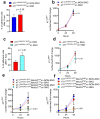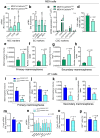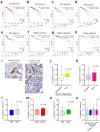Role of Neural (N)-Cadherin in Breast Cancer Cell Stemness and Dormancy in the Bone Microenvironment
- PMID: 35267624
- PMCID: PMC8909418
- DOI: 10.3390/cancers14051317
Role of Neural (N)-Cadherin in Breast Cancer Cell Stemness and Dormancy in the Bone Microenvironment
Abstract
Breast cancer cells that interact with spindle-shaped N-Cadherin+ Osteoblasts (SNOs) are recognised to become dormant through a Notch2-dependent mechanism. We found that Notch2High human BrCa MDA-MB231 (MDA) cells also expressed high level of N-Cadherin. This prompted us to hypothesize that N-Cadherin could have a role in MDA-SNO interaction. Of note, the expression of N-Cadherin in MDA cells reduced tumour incidence and bone osteolysis in BrCa mouse model. Moreover, similarly to Notch2High MDA cells, the N-CadherinHigh MDA cells revealed a high expression of the canonical Haematopoietic Stem cell (HSC) markers, suggesting an HSC mimicry, associated with higher ability to form mammospheres. Interestingly, N-CadherinHigh MDA cells showed greater capacity to adhere to SNOs, while the inhibition of SNO-mediating MDA cell proliferation was unremarkable. To investigate whether these features were shared by mouse BrCa, we used the 4T1 cell line in which N-Cadherin expression was abolished and then rescued. At variance with MDA cells, 4T1 cells expressing N-Cadherin revealed that the latter was associated with a lower expression of the HSC marker, Cxcr4, along with a lower capacity to form mammospheres. Furthermore, the rescue of N-Cadherin expression increased cell-cell adhesion and reduced proliferation of 4T1 cells when they were co-plated with SNOs. In conclusion, we demonstrated that: (i) N-CadherinHigh and Notch2High MDA cells showed similar HSC mimicry and dormancy features; (ii) N-Cadherin mediated BrCa-SNO adhesion; (iii) N-Cadherin had a positive Notch2-dependent role on SNO-induced dormancy and HSC mimicry in MDA cells, and a negative role in 4T1 cell stemness and HSC mimicry.
Keywords: BrCa dormancy; HSC-mimicry; bone microenvironment; cancer stem cells; endosteal niche; osteoblasts.
Conflict of interest statement
The authors declare no potential conflict of interest.
Figures






References
-
- Howlader N., Noone A.M., Krapcho M., Miller D., Brest A., Yu M., Ruhl J., Tatalovich Z., Mariotto A., Lewis D.R., et al. Cancer Statistics Review, 1975-2018-SEER Statistics. [(accessed on 4 October 2021)]; Available online: https://seer.cancer.gov/csr/1975_2018/
-
- Naumov G.N., Townson J.L., MacDonald I.C., Wilson S.M., Bramwell V.H.C., Groom A.C., Chambers A.F. Ineffectiveness of doxorubicin treatment on solitary dormant mammary carcinoma cells or late-developing metastases. Breast Cancer Res. Treat. 2003;82:199–206. doi: 10.1023/B:BREA.0000004377.12288.3c. - DOI - PubMed
Grants and funding
LinkOut - more resources
Full Text Sources
Research Materials
Miscellaneous

